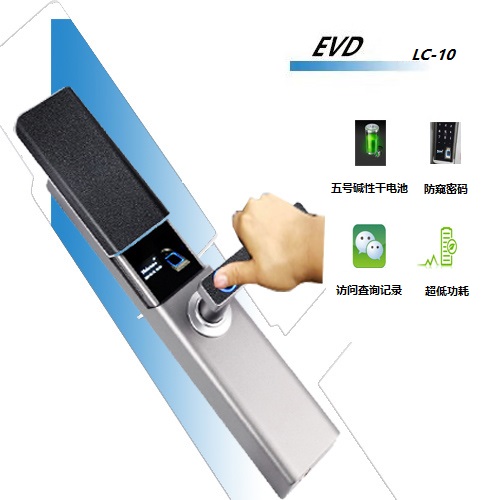Now facing the impact of Face Recognition, the second half of Fingerprint Recognition tends to be dull. Many mobile phone manufacturers are asking for new technologies for face recognition, although there are still many shortcomings in current experience and technology. Still more will pursue new technologies. Faced with the impact of face recognition, the development of fingerprint recognition faces two major challenges.
Since the appearance of the FACE ID on the iPhone X, face recognition has been a real fire, whether it is the vivo, OPPO, hammer released later, or Huawei and Xiaomi, which are to be adopted in the future, have adopted or are ready to adopt face recognition. . Seeing that face recognition is in turmoil, the fingerprint recognition that has been in full swing has entered a period of dullness.

Although the fingerprint is the best choice under the full screen, the current situation is that the development of the fingerprint of the optical screen or the fingerprint of the ultrasonic screen has not yet officially entered the application period. Therefore, the Apple iPhone X uses 3D face recognition instead of fingerprint recognition. The vivo, OPPO, and hammer are the coexistence of face recognition and capacitive fingerprint recognition. From the above perspective, the competitiveness of fingerprint recognition is gradually fading.
However, according to the user feedback of iPhone X for nearly three weeks, FACE ID is not as convenient and fast as fingerprints, and face recognition carried by domestic mobile phone manufacturers is a kind of recognition method, which is more like a curious attitude. Hammer Luo Yonghao said at his press conference that the security of face recognition is not as good as fingerprint recognition. It is recommended that users mainly use fingerprint recognition.
Then,how can capacitive fingerprint recognition better participate in the competition under the new trend of mobile phones when face recognition has not reached a satisfactory application level, and the fingerprints under the screen are not formally applied?
Guo Zhenhua of the Graduate School of Tsinghua University in Shenzhen believes that there are two research directions: one is to apply deep learning to fingerprint recognition to improve the recognition accuracy; the other is to collect the physical components of the living body and better anti-counterfeiting.
From the current status of fingerprints, the development of fingerprint recognition faces two major challenges. On the one hand, the recognition ability under large population is low. For example, the surface features of fingerprints of some users are unclear and difficult to identify. In addition, under one-to-one conditions, the accuracy of fingerprint recognition is high, but in the case of increasing number of people, the recognition accuracy will be significantly reduced. Therefore, fingerprint recognition is also urgently needed to improve the recognition accuracy.

On the other hand, the anti-counterfeiting effect of fingerprints is not ideal, and the news that fingerprints are cracked by fingerprint film, photos, broken fingers, etc., is endless. Therefore, fingerprints also urgently need anti-counterfeiting features.
In response to these two challenges, Guo Zhenhua also proposed a solution. In order to improve the accuracy of fingerprints, Guo Zhenhua suggested applying deep learning to fingerprints. Deep learning is an end-to-end process that can be categorized and evaluated for different application scenarios. He said that based on the traditional method of experience, when the amount of data reaches a certain level, its performance may also reach a bottleneck, while deep learning can gradually improve the performance as the amount of data increases, thereby improving the accuracy of fingerprint recognition.
In response to the problem of fingerprint anti-counterfeiting, Guo Zhenhua said that OpTIcal coherence tomography technology, or OCT, is called optical tomography. This technique was originally used in medicine, such as cardiovascular disease diagnosis, eye disease diagnosis, and living body detection. Fingerprint recognition.
The technology utilizes near-infrared light and optical interference principle to perform tomographic imaging of biological tissues. It can not only collect internal fingerprints and external fingerprints, but also detect sweat glands between two layers of fingerprints, while fake fingerprints have fingerprint lines but are lacking. Sweat gland and internal fingerprint structure. It can be seen that the application of this technology is more conducive to anti-counterfeiting.
In addition, based on the OCT technology, OpTIcal Anigiography, or OAG, or optical microangiography, can be used to process the signals collected by OCT, effectively separating static scattering particles and dynamic scattering particles in the sample.
Guo Zhenhua also introduces the difference between dynamic information and static information by taking the flow rate of milk in the pipeline as an example. The higher the flow rate, the higher the dynamic part strength. In terms of returning to the fingerprint, it is possible to distinguish the fingerprint without blood flow information and truly detect the living fingerprint.
Although fingerprint recognition is slightly dim under the hot face recognition, it has become a standard for smart phones that has been developed for many years. It will continue to be popularized in the low-end market in the future, and the market scale is still in the market. Steady growth. The fingerprint recognition with deep learning and living detection technology increases the accuracy and security of the anti-counterfeiting performance, and also increases the difficulty and cost of the attack. The improvement of the fingerprint security performance also greatly assists the trend toward greater There is still a lot of uncertainty in the application space, which competes with other biometric technologies such as face recognition.
